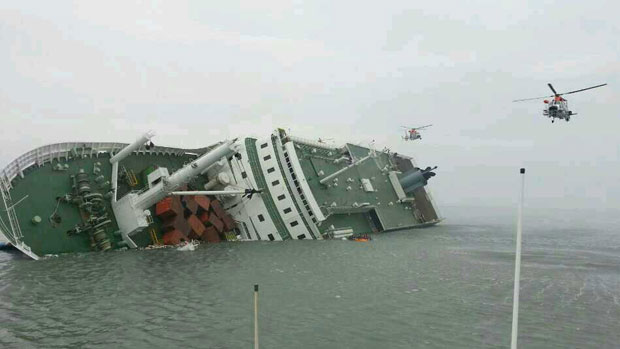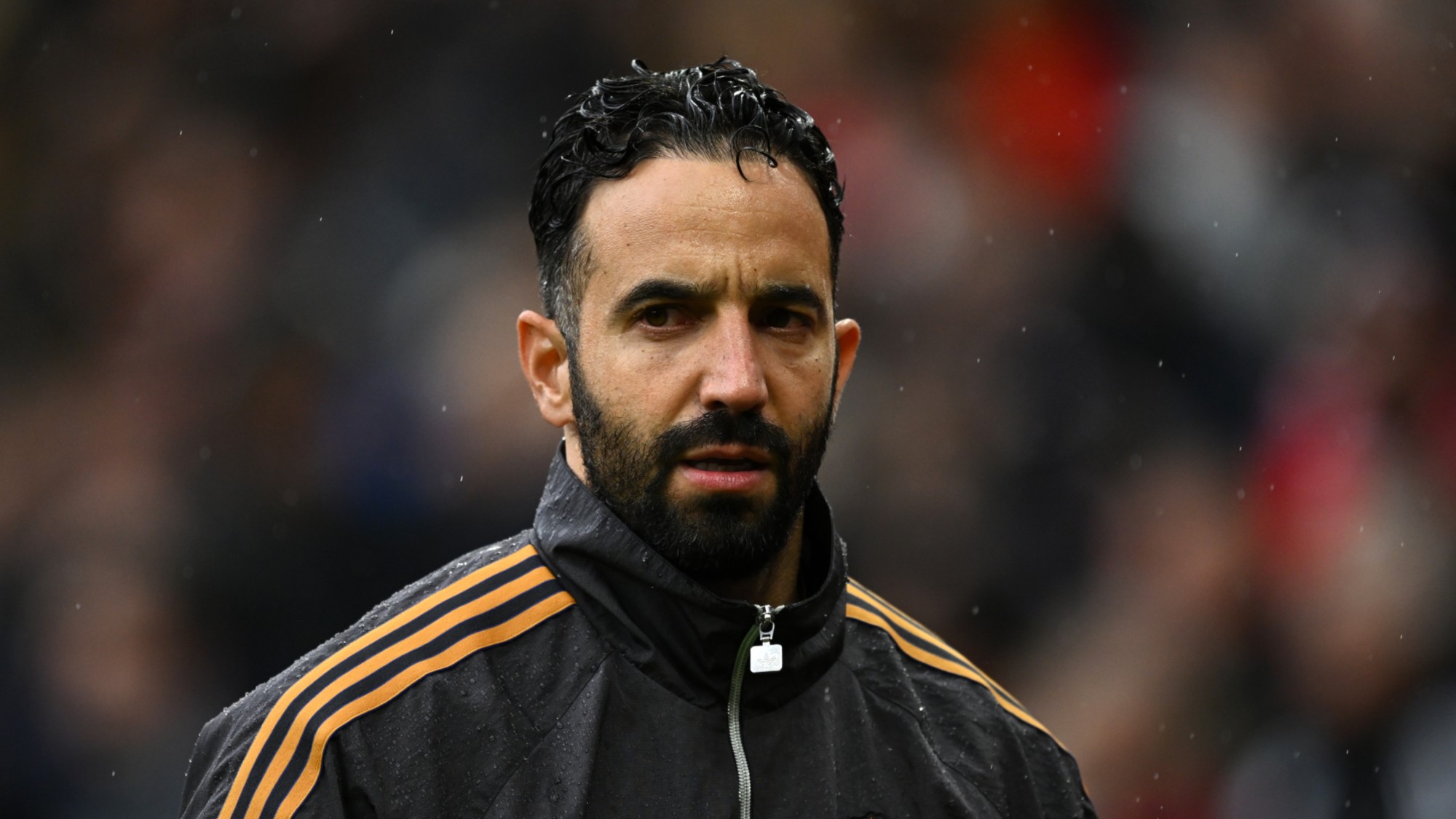South Korea ferry verdict: Sewol captain escapes death penalty
Captain Lee sentenced to 36 years in prison for abandoning ship but the victims' families say it is not enough

The captain of the South Korean ferry that capsized in April has escaped the death penalty and has instead been sentenced to 36 years in jail for his role in the tragedy.
Lee Joon-seok was acquitted of murder but found guilty of gross negligence for abandoning passengers onboard the overloaded Sewol ferry. More than 300 people died in what was one of South Korea’s worst maritime disasters. The vast majority of the victims were school children.
Captain Lee and several of his crew members fled the ship after it capsized and were among the first to be rescued by the coast guard. They were accused of causing hundreds of unnecessary deaths by failing to issue evacuation orders and telling the children to stay in their cabins.
The Week
Escape your echo chamber. Get the facts behind the news, plus analysis from multiple perspectives.

Sign up for The Week's Free Newsletters
From our morning news briefing to a weekly Good News Newsletter, get the best of The Week delivered directly to your inbox.
From our morning news briefing to a weekly Good News Newsletter, get the best of The Week delivered directly to your inbox.
The court said it could not conclude that the defendants "were aware that all of the victims would die because of their actions and they had an intention to kill them," therefore, "the murder charges are not accepted," The Times reports.
Prosecutors had demanded the death penalty and before the trial even started, President Park Geun-hye made a public statement condemning the crew's action, saying that their decision to abandon ship had been "tantamount to murder".
The sentence means that Lee, aged 69, is likely to spend the rest of life in jail for his role in the tragedy, the BBC's Steve Evans reports. The 14 crew members were found guilty of various charges, including negligence and were sentenced to between five and 20 years in prison.
The victims’ families issued a statement saying that they were "devastated" by the verdict and that justice had failed, The Guardian reports. One mother shouted: "It's not fair. What about the lives of our children? They (the defendants) deserve worse than death."
A free daily email with the biggest news stories of the day – and the best features from TheWeek.com
Coinciding with the verdicts, authorities have officially called off the seven-month search for the missing bodies. Divers have retrieved 295 bodies from the ocean, but nine still remain unaccounted for.
South Korea ferry: students reveal horror of Sewol disaster
28 July
Survivors of South Korea's Sewol ferry disaster have begun testifying against the captain and crew. The passenger ferry capsized on 16 April, killing 304 of the 476 people on board. More than 300 passengers were Danwon High School pupils on an organised trip, but only 75 students survived. The captain, Lee Joon-Seok, and three senior crew members are accused of "homicide through wilful negligence", a charge that can carry the death penalty, reports The Guardian. Eleven other crew are being tried on lesser violations of maritime law.
The disaster also led to South Korea's biggest manhunt, in which authorities searched for Yoo Byung-un, the owner of the ferry company. His body, which was badly decomposed, was identified a few days ago after it was discovered by a farmer in an orchard last month. Investigators say the ferry was overloaded, having been illegally modified to carry more passengers and cargo. Six students, whose names were withheld to protect their privacy, have been giving evidence. Here is what the court has heard so far:
Passengers repeatedly told to stay put
One teenager said crew members had repeatedly told passengers – "specifically the students of Danwon High School" – to stay in their cabins. Prosecutors claim it was these instructions that partly led to more deaths. Despite the ferry listing heavily, with passengers thrown to one side, an internal tannoy told passengers to put on their life vests and stay put. One student said that she and her classmates obeyed the order until the ferry had listed so far that the door to their cabin was above their heads. Her classmates clambered up fixed furniture and then pulled others up as the water rose inside the cabin, she said.
No help from crew
One witness said that at no time did any crew help her or those with whom she escaped. The bulk of the charges against the crew arise from the fact that they chose to abandon ship while hundreds of people were still trapped inside. The members of crew who stayed to help passengers were among those who died. The crew members on trial, including the captain, have said they thought it was the coastguard's job to evacuate passengers. Students say even the coastguard officers failed to come aboard to try and rescue them but simply waited outside the ferry to fish passengers out of the water.
Classmates swept away
One student described watching a wave sweep her classmates back inside the sinking boat. She said that she and a group of students managed to move along a horizontal stairwell towards an escape hatch. But as she jumped out, water swept over their escape route. "There were many classmates in the corridor and most of them were swept back into the ship," she said.
South Korea ferry: 'impossible' to determine how owner died
25 July
The death of the billionaire businessman blamed for the South Korean ferry disaster remains a mystery after foresnic experts told the BBC that the cause of death was still "unknown".
The body of fugitive Yoo Byung-eun was discovered by South Korean officials in June but was only identified last week. He went on the run soon after the Sewol ferry sank off the coast of South Korea earlier this year, killing 304 passengers, most of whom were young students.
Yoo was the owner of the ferry operator Chonghaejin Marine Co and nationwide manhunt began after police said they wanted to question him his role in the tragedy.
It was revealed that he had "hidden in a cupboard at his holiday home to evade arrest" and his body was discovered in an orchard near his cabin. The remains were discovered on 12 June, but were only identified as Yoo last week.
"It was impossible to conclude the cause of death since Yoo's body was in a very advanced stage of decomposition," said Seo Joong-seok, director of South Korea's National Forensic Service (NFS).
The tragedy in April sparked national criticism of the government and allegations of corruption among top officials.
A government investigation into the incident concluded earlier this month that the ferry sank "due to negligence and corruption", the BBC reports.
The report cited "lax regulation, poor safety inspections and a slow and badly-coordinated coast guard response" as contributing factors.
Investigators claimed that the incident had been "man-made" and was a result of top level officials "prioritising profit over safety", The Independent reports.
The report found that the disaster could have been avoided if:
- The licensing of the ship had been properly regulated. The report revealed that the vessel was licensed based on fake documents.
- Less cargo had been onboard. Officials confirmed that the Sewol had been illegally modified and was carrying almost double its legal limit.
- Adequate safety checks had been performed by the Korean Register of Shipping.
- The coastguard had responded faster and issued better rescue guidelines.
- The captain had not delayed in issuing evacuation orders.
The trial of the ferry's captain, Lee Joon-seok, and members of his crew is currently ongoing. Lee is charged with manslaughter and the other crewmembers face charges ranging from negligence to homicide.
South Korea ferry: death toll hits 100 as salvage begins
22 April
THE death toll from last week’s sinking of the South Korean ferry Sewol has passed 100 as hope runs out for those still missing. Divers will keep searching for bodies for a further two days, after which salvage experts will raise the ship.
According to the BBC, there were 476 people on the ship, of whom 339 were children and teachers taking a pre-exam school trip to Jeju island. A total of 174 passengers and crew are known to be safe, while 104 bodies have been recovered.
The families of the remaining 198 have accepted that the chances of finding anyone alive five days after the accident are “practically nil”, says The Guardian. They have agreed to allow officials to abandon the labour-intensive and dangerous search for survivors by divers in favour of raising the ship using salvage equipment.
Woo Dong-suk, an uncle of one of the missing schoolchildren told the paper: “It’s been too long already. The bodies must be decayed. The parents’ only wish right now is to find them before they are badly decomposed.”
Divers will prioritise getting into the ship’s restaurant, where they believe many of the passengers were trapped, in the last days of searching. Meanwhile, an underwater robot has been taken to the scene. It will be used to help raise the ship.
The Sewol began to list at 8.58am local time on 16 April and, within two and a half hours, had completely capsized. It is still not known what caused the disaster: there were reports that witnesses heard an impact at the time but these have not been repeated or confirmed.
The Guardian says South Korean investigators are examining evidence that an inexperienced third mate executed a dangerously sharp turn just before the ferry started listing. The captain, Lee Joon-seok, was not on the bridge at the time.
Lee, 69, and six other crew members, have been detained by the authorities. The captain has been charged with negligence and failing to secure the safety of the passengers, says Sky News.
South Korean president Park Geun-hye has publicly accused Lee of “murderous acts”, in what some observers saw as an attempt to deflect attention from an inadequate response to the disaster by the authorities.
South Korea ferry captain: ‘I bow my head in apology’
19 April
The captain of the South Korean ferry that sank this week with 475 passengers on board says he delayed issuing evacuation orders because he feared passengers would "drift away".
Lee Joon-seok, described as an industry veteran by the ship's owners and an "expert" by others, was arrested with two crew members yesterday. He has faced growing criticism for not giving orders to evacuate quickly enough.
He told television reporters: "The current was very strong, the temperature of the ocean water was cold, and I thought that if people left the ferry without proper judgement, if they were not wearing a life jacket, and even if they were, they would drift away and face many other difficulties.”
He added: "I am sorry to the people of South Korea for causing a disturbance and I bow my head in apology to the families of the victims.”
As rescue operations continue for a fourth day, the number of missing stands at 273 with 29 confirmed dead. Some 174 passengers have been rescued.
Investigators are now concentrating on the sharp turn the ship took prior to its listing and probing whether an evacuation order could have saved more lives.
The 69-year-old captain faces charges including negligence of duty and violation of maritime law. The two crew members were arrested for failing in their duty to assist passengers.
South Korea ferry passengers 'told to stay put' as ship sank
17 March
NINE people have been confirmed dead and 300 are still missing as the search operation continues in the wake of the South Korean ferry disaster, which looks likely to be one of the worst maritime disasters for decades.
Officials say that the number of casualties could rise "drastically" over the next few days, with hundreds of people believed to be trapped inside the sunken vessel.
Emergency services said last night that they had managed to save just 164 of the 470 people on board.
Survivors who were taken to the nearby island of Jindo said that crew members gave conflicting instructions as the Sewol ferry began to list violently and then sink, The Times reports.
"It was fine, then the ship went 'boom', and there was a noise of cargo falling," one passenger, Cha Eun-ok, told reporters. "The on-board announcement told people to stay put [but] people who stayed are trapped," she said.
Urgent rescue efforts are ongoing with 40 coastguard and military vessels and a team of specialist navy divers operating in the choppy waters about 20 km (12 miles) off the country's southwestern coast. But the operation has been hampered by poor weather.
Meanwhile, frustration has grown among families of the victims, as police refused to let a group of 30 civilian divers take part in the search for any survivors who may still be trapped in the sunken ferry.
The cause of the disaster was not immediately clear. The state broadcaster YTN reported that strong winds had caused cargo on top of the ship to move. The ship then began to list as passengers were instructed to put on their life jackets.
The search effort continues but many rescuers do not hold out much hope of finding any more survivors.
"Considering the water temperature, depth and the time elapsed, anyone trapped inside is unlikely to have survived," a rescue worker told local media.
Hundreds missing as South Korean ferry capsizes
16 April
TWO people are dead and almost 300 are missing after a ferry carrying 476 people capsized off the coast of South Korea.
The ferry sank between the port of Incheon, in the north-west of the country, and the southern resort island of Jeju. Among the passengers were 300 school students.
A major rescue operation is underway including dozens of coastguard and navy vessels and 18 helicopters. It was reported that 368 people had been rescued, but the BBC explains that after "a counting error" the number was halved to 180, leaving almost 300 people unaccounted for.
The two people have been confirmed dead are said to be a female crew member in her twenties, and a man who died in hospital.
The Sewol, a car and passenger ferry, sounded its distress signal shortly before 9am local time after it collided with rocks and began listing dangerously. Ferries had been cancelled overnight due to heavy fog, but locals reported that visibility had been fair by the time the Sewol set sail.
Passengers said that the ship had struck rocks 12 miles from the island of Byungpoong.
"We heard a big thumping sound and the boat stopped," one passenger told South Korean TV network YTN. "The boat is tilting and we have to hold on to something to stay seated."
One rescued student, Lim Hyung Min, told YTN that he heard a loud thump, and then the ferry began to sink. Everyone was ordered to put on their life jackets and jump overboard, he said. "I had to swim a bit to get to the boat to be rescued... The water was so cold and I wanted to live."
YTN reported that all the students have now been rescued, but the South Korean coast guard has yet to confirm those accounts.
Images shown on South Korean television showed the ship at a 45 degree angle. Later, the ship appeared to have overturned and was almost completely submerged.
-
 The rise of runcations
The rise of runcationsThe Week Recommends Lace up your running shoes and hit the trails on your next holiday
-
 Amorim follows Maresca out of Premier League after ‘awful’ season
Amorim follows Maresca out of Premier League after ‘awful’ seasonIn the Spotlight Manchester United head coach sacked after dismal results and outburst against leadership, echoing comments by Chelsea boss when he quit last week
-
 ‘Jumping genes': How polar bears are rewiring their DNA to survive the warming Arctic
‘Jumping genes': How polar bears are rewiring their DNA to survive the warming ArcticUnder the radar The species is adapting to warmer temperatures
-
 How Bulgaria’s government fell amid mass protests
How Bulgaria’s government fell amid mass protestsThe Explainer The country’s prime minister resigned as part of the fallout
-
 Femicide: Italy’s newest crime
Femicide: Italy’s newest crimeThe Explainer Landmark law to criminalise murder of a woman as an ‘act of hatred’ or ‘subjugation’ but critics say Italy is still deeply patriarchal
-
 Brazil’s Bolsonaro behind bars after appeals run out
Brazil’s Bolsonaro behind bars after appeals run outSpeed Read He will serve 27 years in prison
-
 Americans traveling abroad face renewed criticism in the Trump era
Americans traveling abroad face renewed criticism in the Trump eraThe Explainer Some of Trump’s behavior has Americans being questioned
-
 Nigeria confused by Trump invasion threat
Nigeria confused by Trump invasion threatSpeed Read Trump has claimed the country is persecuting Christians
-
 Sanae Takaichi: Japan’s Iron Lady set to be the country’s first woman prime minister
Sanae Takaichi: Japan’s Iron Lady set to be the country’s first woman prime ministerIn the Spotlight Takaichi is a member of Japan’s conservative, nationalist Liberal Democratic Party
-
 Russia is ‘helping China’ prepare for an invasion of Taiwan
Russia is ‘helping China’ prepare for an invasion of TaiwanIn the Spotlight Russia is reportedly allowing China access to military training
-
 Interpol arrests hundreds in Africa-wide sextortion crackdown
Interpol arrests hundreds in Africa-wide sextortion crackdownIN THE SPOTLIGHT A series of stings disrupts major cybercrime operations as law enforcement estimates millions in losses from schemes designed to prey on lonely users